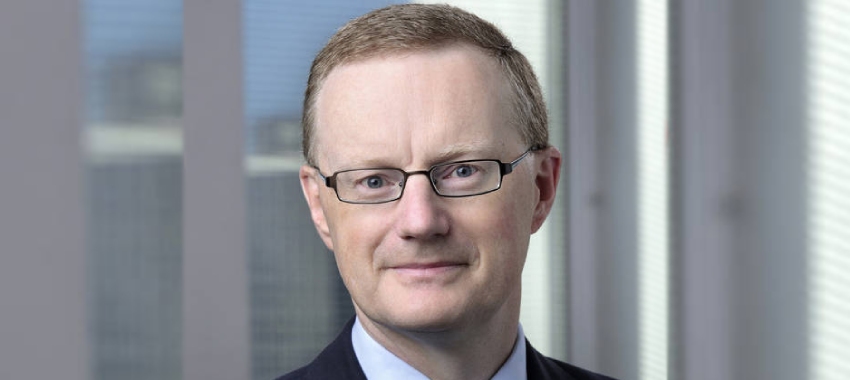
The Reserve Bank has revealed its cash rate call for April, as inflation and costs continue to creep higher.
The Reserve Bank of Australia (RBA) has decided to hold the cash rate at its current record low level of 0.1 per cent, in line with market expectations.
In his statement on the monetary policy decision, RBA governor Philip Lowe commented that the board had continued to observe sharp rises in inflation.
“Ongoing supply-side problems, Russia’s invasion of Ukraine and strong demand as economies recover from the pandemic are all contributing to the upward pressure on prices,” Dr Lowe said.
The Australian economy had remained resilient, with spending picking up following the omicron outburst. But Dr Lowe noted that rising prices have placed pressure on household budgets, while the recent floods have caused hardship for many communities.
As previously outlined by the central bank, it will not raise the rate until annual inflation is “sustainably” within the 2 to 3 per cent range – meaning annual wages growth will also need to rise above 3 per cent.
However, inflation has accelerated at a faster pace than expected, fuelled by the Ukraine invasion and disruptions to supply chains. In underlying terms, inflation is currently 2.6 per cent.
Dr Lowe stated on Tuesday (5 April) that higher prices for petrol and other commodities will result in a further lift in inflation over the coming quarters, with the RBA to release updated forecasts in May.
“The main sources of uncertainty relate to the speed of resolution of the various supply-side issues, developments in global energy markets and the evolution of overall labour costs,” he said.
At the same time, wages growth has maintained a more moderate pace. ABS data showed wages increased by 2.3 per cent during 2021.
While some Australians have seen larger wage rises, at the aggregate level, wages growth is only around the levels it sat at before the pandemic.
“Inflation has picked up and a further increase is expected, but growth in labour costs has been below rates that are likely to be consistent with inflation being sustainably at target,” Dr Lowe said.
“Over coming months, important additional evidence will be available to the Board on both inflation and the evolution of labour costs. The board will assess this and other incoming information as its sets policy to support full employment in Australia and inflation outcomes consistent with the target.”
With the “tightness” of the labour market, the RBA has forecast a further pickup in wages growth and labour costs.
But, the pickup in wages is still expected to be only gradual, with Dr Lowe commenting there is uncertainty about the behaviour of labour costs at the current historically low levels of unemployment.
The government has attempted to address the rising costs of living, with measures in the federal budget last week such as the cut to fuel excise, one-off $250 cash payments to welfare recipients and the $420 tax break.
The RBA has only adjusted the rate immediately after the federal budget once in the last decade (in 2020, amid the COVID-19 lockdowns), Loan Market managing director Andrea McNaughton noted.
David Zammit, national sales director at Mortgage Choice echoed Ms McNaughton, commenting the RBA has remained “committed to its wait and see approach”.
“Given this was the first monetary policy meeting since the Federal Budget was handed down, I wasn’t expecting the board to rock the boat,” he said.
“However, the implications of the stimulus provided by this budget could see the first rate hike brought forward.”
Paul Ryan, economist at PropTrack believes the RBA will wait for further data on both inflation and wages growth later in the year, before it makes any movements. But that could change.
“The RBA cannot look through temporary inflation forever, so there remains the possibility strong supply-shock driven inflation will force the RBA’s hand,” Mr Ryan said.
“The RBA will be keenly watching that inflation expectations across the economy are not being driven higher by increases in the cost-of-living.”
Similarly, Carl Hammerschmidt, CEO of home loans marketplace Joust, commented the next set of CPI (consumer price index) data will be “interesting as if it exceeds their targets, then a rate rise will definitely happen”.
But there could be pain for borrowers if that proceeds.
“Any increase on rates right now amongst the challenges of petrol and increased cost of living would have a dramatic impact on everyday Australians,” Mr Hammerschmidt said.
RBA governor Mr Lowe has previously said a pickup in the cash rate seems “plausible”, as economists have speculated the first increase could come around August to September, or as soon as June.
The looming rise in interest rates and subsequent higher borrowing costs will further weigh on house price growth – which has already begun to slow in anticipation, Mr Ryan added.
“The outlook for housing prices later in the year is one of a balance between higher mortgage rates and higher income growth the RBA is looking to see before raising rates,” he said.
The RBA is also targeting full employment, as the unemployment rate has fallen to its lowest level in years, hitting 4 per cent in February.
The Reserve Bank’s central forecast is for the unemployment rate to fall below 4 per cent in the coming months and to remain there in 2023.
Lenders to switch up
While the RBA is broadly anticipated to raise the rate within the next few months, recently appointed Finsure chief executive Simon Bednar has predicted the uptick in funding costs could see lenders push up mortgage rates by 25 to 50 bps.
“It’s just a matter of who will pull the trigger first,” he said.
“While there is always much speculation about what action the RBA will take and the timing of any rate increases, mortgage holders also need to be prepared for what their lender is about to do.”
Meanwhile, recent Australian Bureau of Statistics (ABS) data showed new housing loans fell by 3.7 per cent in February, including an 8.3 per cent decline in loans to first home buyers.
Over at Loan Market, the company’s broker network recorded a 52 per cent year-on-year rise in refinancing request volumes during the March quarter.
“Consumers are proactively looking to secure their finances as the days of record-low interest rates end. Consumers aren’t waiting around for the central bank to change its outlook,” Ms McNaughton explained.
“We anticipate refinancing activity to continue as we head toward the middle of the year and the likelihood of more rate increases.”
Mortgage Choice reported that as fixed rates have risen sharply, demand for the loan product has fallen – with the group’s home loan approval data showing that in March, 22 per cent of its mortgages had a fixed component.
[Related: Federal budget tentatively welcomed]
